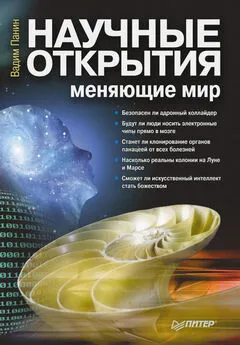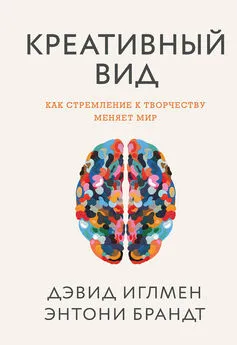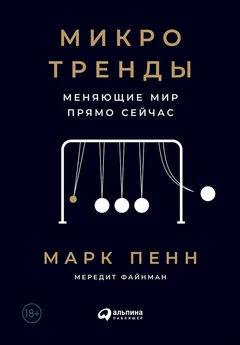Элхонон Голдберг - Креативный мозг [Как рождаются идеи, меняющие мир] [litres]
- Название:Креативный мозг [Как рождаются идеи, меняющие мир] [litres]
- Автор:
- Жанр:
- Издательство:Литагент 5 редакция «БОМБОРА»
- Год:2019
- Город:Москва
- ISBN:978-5-04-105057-3
- Рейтинг:
- Избранное:Добавить в избранное
-
Отзывы:
-
Ваша оценка:
Элхонон Голдберг - Креативный мозг [Как рождаются идеи, меняющие мир] [litres] краткое содержание
Какова природа творчества? Какая работа разума скрывается за его мистикой? Каковы эволюционные корни креативности? В книге нейробиолога и нейропсихолога Элхонона Голдберга эти и другие вопросы рассматриваются как с научной, так с исторической и культурологической точек зрения, превращаясь в масштабное и увлекательное исследование. Опираясь на результаты последних открытий и исследований мозга, а также на собственные идеи и гипотезы, Голдберг приходит к оригинальному, убедительному и даже провокационному пониманию природы творчества и креативности. Читатель совершит удивительное путешествие сквозь эпохи и страны: от античности до далекого будущего, от Западной Европы до Юго-Восточной Азии. Автор делает смелые прогнозы о перспективных направлениях творчества и инноваций, объясняя их биологические и культурные истоки, рассказывает о том, как они сформируют общество будущего и изменят способы развития человеческого мозга.
Креативный мозг [Как рождаются идеи, меняющие мир] [litres] - читать онлайн бесплатно ознакомительный отрывок
Интервал:
Закладка:
22. T. W. Robbins, «Shifting and Stopping: Fronto-striatal Substrates, Neurochemical Modulation and Clinical Implications», Philosophical Transactions of the Royal Society of London, B: Biological Sciences 362 (2007): 917–932; D. Q. Beversdorf, «Pharmacological Effects on Creativity», in Neuroscience of Creativity, Eds. O. Vartanian, A. S. Bristol, and J. C. Kaufman (Cambridge, MA: MIT Press, 2013): 151–173.
23. H. Takeuchi, Y. Taki, Y. Sassa, H. Hashizume, A. Sekiguchi, A. Fukushima, and R. Kawashima, «Regional Gray Matter Volume of Dopaminergic System Associate with Creativity: Evidence from Voxel-based Morphometry», Neuroimage 51 (2010): 578–585.
24. C. R. Cloninger, D. M. Svrakic, and T. R. Przybeck, «A Psychobiological Model of Temperament and Character», Archives of General Psychiatry 50 (1993): 975–990.
25. I. Greese and S. D. Iversen, «The Role of Forebrain Dopamine Systems in Amphetamine Induced Stereotyped Behavior in the Rat», Psychopharmacologia 39 (1974): 345–357; J. J. Canales and A. M. Graybiel, «A Measure of Striatal Function Predicts Motor Stereotypy», Nature Neuroscience 3 (2000): 377–383; E. Saka, C. Goodrich, P. Harlan, B. K. Madras, and A. M. Graybiel, «Repetitive Behaviors in Monkeys Are Linked to Specific Striatal Activation Patterns», Journal of Neuroscience 24 (2004): 7557–7565; O. De Manzano, S. Cervenka, A. Karabanov, L. Farde, and F. Ullén, «Thinking Outside a Less Intact Box: Thalamic Dopamine D2 Receptor Densities Are Negatively Related to Psychometric Creativity in Healthy Individuals», PLoS One 17 (2010): E10670.
26. K. A. Zalocusky, C. Ramakrishnan, T. N. Lerner, T. J. Davidson, B. Knutson, and K. Deisseroth, «Nucleus Accumbens D2R Cells Signal Prior Outcomes and Control Risky Decision-Making», Nature 531 (2016): 642–646.
27. V. D. Costa, V. L. Tran, J. Turchi, and B. B. Averbeck, «Dopamine Modulates Novelty Seeking Behavior During Decision Making», Behavioral Neuroscience 128 (2014): 556–566.
28. R. M. Bilder, J. Volavka, H. M. Lachman, and A. A. Grace, «The Catechol-OMethyltransferase Polymorphism: Relations to the Tonic— Phasic Dopamine Hypothesis and Neuropsychiatric Phenotypes», Neuropsychopharmacology 29 (2004): 1943–1961.
29. S. D. Glick, D. A. Ross, and L. B. Hough, «Lateral Asymmetry of Neurotransmitters in Human Brain», Brain Research 234 (1982): 53–63; R. Carter, Mapping the Mind (London, UK: Phoenix Publishing, 2004); S. D. Glick, Cerebral Lateralization in Non-Human Species (Cambridge, MA: Academic Press, 1985); S. D. Glick, R. C. Meibach, R. D. Cox, and S. Maayani, «Multiple and Interrelated Functional Asymmetries in Rat Brain», Life Sciences 25 (1979): 395–400; S. L. Andersen and M. H. Teicher, «Sex Differences in Dopamine Receptors and Their Relevance to ADHD», Neuroscience & Biobehavioral Reviews 24 (2000): 137–141.
30. W. James, Principles of Psychology (New York: Henry Holt and Company, 1890).
31. E. Goldberg, The Wisdom Paradox: How Your Mind Can Grow Stronger as Your Brain Grows Older (New York: Gotham Books, 2005).
32. E. R. Kandel, In Search of Memory: The Emergence of a New Science of Mind (New York: W. W. Norton & Company, 2007).
33. W. Barr, E. Goldberg, J. Wasserstein, and P. Novelly, «Patterns of Retrograde Amnesia in Unilateral Temporal Lobectomies», Neuropsychologia 28 (1990): 243–255.
34. A. R. Luria, The Mind of a Mnemonist: A Little Book About a Vast Memory (Cambridge, MA: Harvard University Press, 1987).
35. J. L. McGaugh, «Making Lasting Memories: Remembering the Significant», Proceedings of the National Academy of Sciences USA 110 (2013): 10402—10407.
36. E. M. Hubbard and V. S. Ramachandran, «Neurocognitive Mechanisms of Synesthesia», Neuron 48 (2005): 509–520.
37. K. Vick, «Opiates of the Iranian People», Washington Post Foreign Service (September 23, 2005).
38. D. Martino, A. J. Espay, A. Fasano, and F. Morgante, Disorders of Movement: A Guide to Diagnosis and Treatment, 1st edn. (New York: Springer, 2016).
39. S. Varanese, B. Perfetti, S. Mason, A. Di Rocco, and E. Goldberg, «Lateralized Profiles of Frontal Lobe Dysfunction in Parkinson’s Disease», Presented at the Seventh International Congress on Mental Dysfunctions and Other Non-motor Features in Parkinson’s Disease and Related Disorders (Barcelona, Spain: 2010).
40. M. Jaffe, «Finding Equilibrium in Seesawing Libidos», New York Times (March 8, 2015): A6.
41. G. Giovannoni, J. D. O’Sullivan, K. Turner, A. J. Manson, and A. J. L. Lees, «Hedonistic Homeostatic Dysregulation in Patients with Parkinson’s Disease on Dopamine Replacement Therapies», Journal of Neurology, Neurosurgery, and Psychiatry 68 (2000): 423–428.
42. G. Giovannoni, J. D. O’Sullivan, K. Turner, A. J. Manson, and A. J. L. Lees, «Hedonistic Homeostatic Dysregulation in Patients with Parkinson’s Disease on Dopamine Replacement Therapies», Journal of Neurology, Neurosurgery, and Psychiatry 68 (2000): 423–428.
43. G. Rylander, «Psychoses and the Punding and Choreiform Syndromes in Addiction to Central Stimulant Drugs», Psychiatria, Neurologia, Neurochirurgia 75 (1972): 203–212; E. Schiorring, «Psychopathology Induced by ‘Speed Drugs’», Pharmacology, Biochemistry and Behavior 14 (1981): 109–122; N. A. Graham, C. J. Hammond, and M. S. Gold, «Drug-Induced Compulsive Behaviors: Exceptions to the Rule», Mayo Clinic Proceedings 84 (2009): 846–847.
44. P. Seeman, «Parkinson’s Disease Treatment May Cause Impulse-Control Disorder via Dopamine D3 Receptors», Synapse 69 (2015): 183–189; T. J. Moore, J. Glenmullen, and D. R. Mattison, «Reports of Pathological Gambling, Hypersexuality, and Compulsive Shopping Associated with Dopamine Receptor Agonist Drugs», Journal of the American Medical Association: Internal Medicine 174 (2014): 1930–1933.
45. B. Levant, «The D3 Dopamine Receptor: Neurobiology and Potential Clinical Relevance», Pharmacological Reviews 49 (1997): 231–252.
46. J. Olds and P. Milner, «Positive Reinforcement Produced by Electrical Stimulation of Septal Area and Other Regions of Rat Brain», Journal of Comparative and Physiological Psychology 47 (1954): 419–427; D. Nakahara, N. Ozaki, Y. Miura, H. Miura, and T. Nagatsu, «Increased Dopamine and Serotonin Metabolism in Rat Nucleus Accumbens Produced by Intracranial Self-Stimulation of Medial Forebrain Bundle as Measured by in Vivo Microdialysis», Brain Research 495 (1989): 178–181.
47. V. Menon and D. J. Levitin, «The Rewards of Music Listening: Response and Physiological Connectivity of the Mesolimbic System», NeuroImage 28 (2005): 175–184; L. Aharon, N. Etcoff, D. Ariely, C. F. Chabris, E. O’Connor, and C. Breiter, «Beautiful Faces Have Variable Reward Value: FMRI and Behavioral Evidence», Neuron 32 (2001): 357–551; C. F. Ferris, P. Kulkarni, J. M. Sullivan, J. A. Harder, T. L. Messenger, and M. Febo, «Pup Suckling Is More Rewarding Than Cocaine: Evidence from Functional Magnetic Resonance Imaging and Three-Dimensional Computational Analysis», Journal of Neuroscience 25 (2005): 149–156; M. Numan, «Motivational Systems and the Neural Circuitry of Maternal Behavior in the Rat», Developmental Psychobiology 49 (2007): 12–21.
48. A. J. Robison and E. J. Nestler, «Transcriptional and Epigenetic Mechanisms of Addiction», Nature Reviews Neuroscience 12 (2011): 623–637; E. J. Nestler, «Cellular Basis of Memory for Addiction», Dialogues in Clinical Neuroscience 15 (2013): 431–443.
49. V. Voon, P. O. Fernagut, J. Wickens, C. Baunez, M. Rodriguez, N. Pavon, J. L. Juncos, J. A. Obeso, and E. Bezard, «Chronic Dopaminergic Stimulation in Parkinson’s Disease: From Dyskinesias to Impulse Control Disorders», Lancet Neurology 8 (2009): 1140–1149.
50. A. Verdejo-Garcia, R. Vilar-Lopez, M. Perez-Garcia, and E. Goldberg, «Altered Adaptive but Not Veridical Decision-Making in Substance Dependent Individuals», Journal of the International Neuropsychological Society 12 (2006): 90–99; A. H. Evans, R. Katzenschlager, D. Paviour, J. D. O’Sullivan, S. Appel, A. D. Lawrence, and A. J. Lees, «Punding in Parkinson’s Disease: Its Relation to the Dopamine Dysregulation Syndrome», Movement Disorders 19 (2004): 397–405; S. S. O’Sullivan, A. H. Evans, and A. J. Lees, «Punding in Parkinson’s Disease», Practical Neurology 2007 7 (2007): 397–399.
51. E. Goldberg, K. Podell, R. Harner, M. Lovell, and S. Riggio, «Cognitive Bias, Functional Cortical Geometry, and the Frontal Lobes: Laterality, Sex, and Handedness», Journal of Cognitive Neuroscience 6 (1994): 274–294.
52. S. Varanese, B. Perfetti, S. Mason, A. Di Rocco, and E. Goldberg, «Lateralized Profiles of Frontal Lobe Dysfunction in Parkinson’s Disease», Presented at the Seventh International Congress on Mental Dysfunctions and Other Non-Motor Features in Parkinson’s Disease and Related Disorders (Barcelona, Spain: 2010).
53. R. A. Goldstein, N. D. Volkow, «Drug Addiction and Its Underlying Neurobiological Basis: Neuroimaging Evidence for the Involvement of the Frontal Cortex», American Journal of Psychiatry 159 (2002): 1642–1652; A. Verdejo-Garcia, R. Vilar-Lopez, M. Perez-Garcia, and E. Goldberg, «Altered Adaptive but Not Veridical Decision-Making in Substance Dependent Individuals», Journal of the International Neuropsychological Society 12 (2006): 90–99.
54. A. Verdejo-Garcia, L. Clark, J. Verdejo-Roma, N. Albein-Urios, J. M. Martinez-Gonzalez, B. Gutierrez, and C. Soriano-Mas, «Neural Substrates of Cognitive Flexibility in Cocaine and Gambling Addictions», The British Journal of Psychiatry (2015) 207: 158–164; O. Contreras-Rodríguez, N. Albein-Urios, J. C. Perales, J. M. Martínez-Gonzalez, R. Vilar-López, M. J. Fernández-Serrano, O. Lozano-Rojas, and A. Verdejo-García, «Cocaine-Specific Neuroplasticity in the Ventral Striatum Network Is Linked to Delay Discounting and Drug Relapse», Addiction 10 (2015): 1953–1962.
1. Более подробный обзор биологических различий двух полушарий у разных видов см.: E. Goldberg, The New Executive Brain: Frontal Lobes in a Complex World (New York: Oxford University Press, 2009); and E. Goldberg, The Wisdom Paradox: How Your Mind Can Grow Stronger as Your Brain Grows Older (New York: Gotham Books, 2005).
2. E. Goldberg and L. Costa, «Hemisphere Differences in the Acquisition and Use of Descriptive Systems», Brain and Language 14 (1981): 144–173.
3. T. G. Bever and R. J. Chiarello, «Cerebral Dominance in Musicians and Nonmusicians», Science 185 (1974): 537–539.
4. C. A. Marci and G. Berlucchi, «Right Visual Field Superiority for Accuracy of Recognition of Famous Faces in Normals», Neuropsychologia 15 (1977): 751–756.
5. A. Martin, «Automatic Activation of the Medial Temporal Lobe During Encoding: Lateralized Influences of Meaning and Novelty», Hippocampus 9 (1999): 62–70.
6. M. Lezak, D. B. Howieson, E. D. Bigler, and D. Tranel, Neuropsychological Assessment, 5th edn. (New York: Oxford University Press, 2012).
7. M. Corbetta and G. L. Shulman, «Control of Goal-Directed and Stimulus-Driven Attention in the Brain», Nature Reviews Neuroscience 3 (2002): 201–215; M. Corbetta, G. Patel, and G. L. Shulman, «The Reorienting System of the Human Brain: From Environment to Theory of Mind», Neuron 58 (2008): 306–324; B. J. Levy and A. D. Wagner, «Cognitive Control and Right Ventrolateral Prefrontal Cortex: Reflexive Reorienting, Motor Inhibition, and Action Updating», Annals of the New York Academy of Sciences 1224 (2011): 40–62; D. Badre and A. D. Wagner, «Left Ventrolateral Prefrontal Cortex and the Cognitive Control of Memory», Neuropsychologia 45 (2007): 2883–2901.
Читать дальшеИнтервал:
Закладка:
![Обложка книги Элхонон Голдберг - Креативный мозг [Как рождаются идеи, меняющие мир] [litres]](/books/1065923/elhonon-goldberg-kreativnyj-mozg-kak-rozhdayutsya-id.webp)









